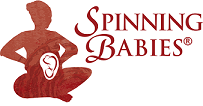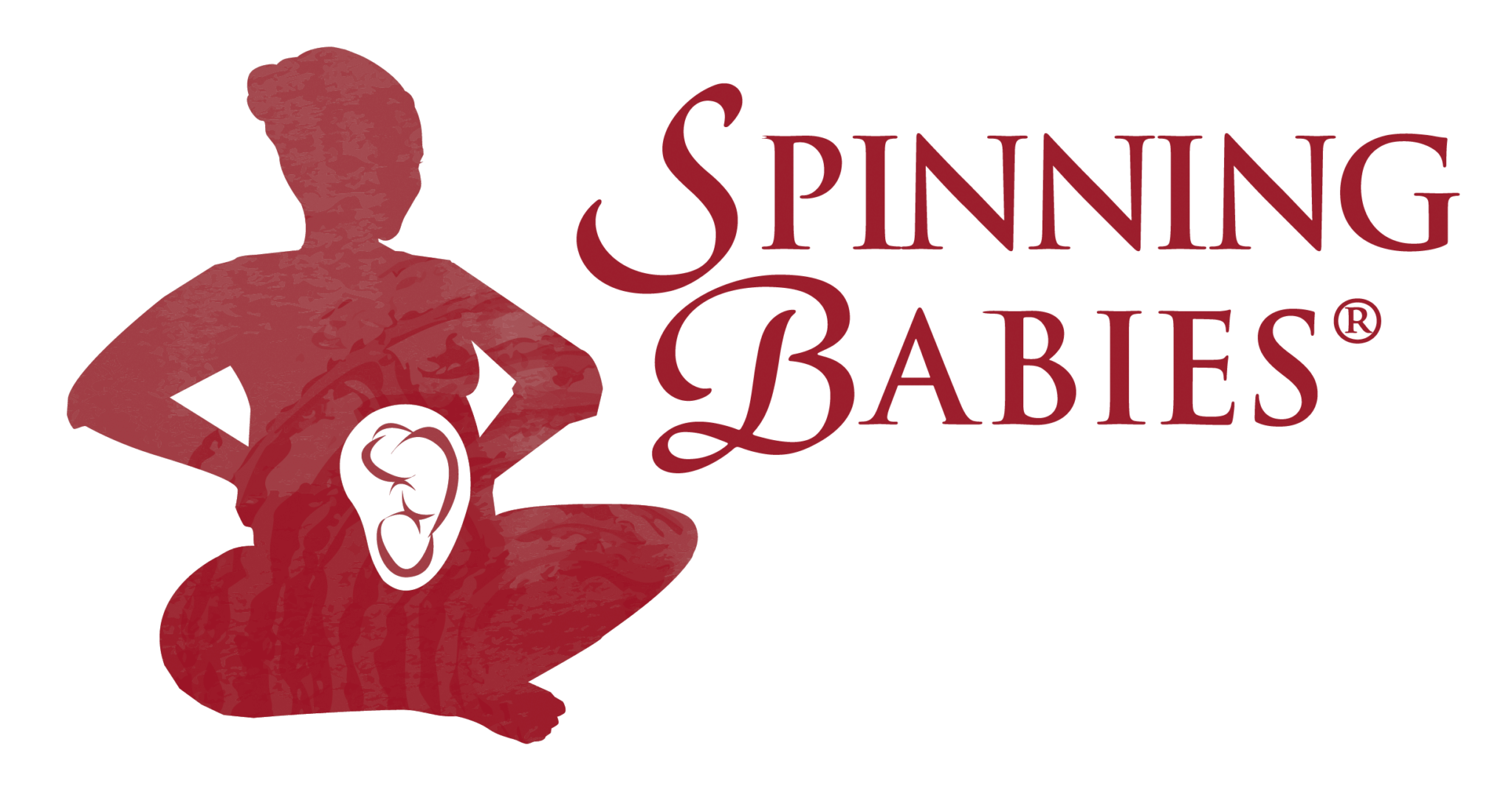Spinning Babies is not a method. Spinning Babies is a way of looking at childbirth.
Here, I see the mother and baby moving together as partners in birth. That makes sense, they each have a role, a choreograph or dance step to do in the birth process.
When baby is lined up with the pelvis, labor proceeds spontaneously. What do I mean lined up?
When baby’s back is curled towards the front and front left side of the woman’s uterus, the baby ‘s spine is flexed. Flexion gives the baby ease in navigating the pelvic brim. The flexed, or curled, baby can push their feet off the top of the uterus and aim themselves lower into the pelvis. Many women feel baby kicking and repositioning after a contraction. Baby is an active partner in birth.
Some babies are on the mother’s right side, or along mother’s back, spine to spine. Especially so in the first time mother, being on the right or along the mother’s back can extend baby’s back causing extension of the fetal spine. This straight fetal back aims the top of baby’s head right into the mother’s pubic bone. Engagement is delayed until the forehead turns to fit the brim or the baby flexes just enough to enter the bony pelvis.
Even if baby’s head is able to scoot past the pubic bone while still facing mother’s front, the head often remains extended (chin is away from baby’s chest). This makes the head seem larger (Your baby is too big! We must do a cesarean.)
The baby’s whose spine is already straighten to its full length can’t as easily kick off the top of the uterus to maneuver downward. The mother has to do more of the birth work herself. This is still quite possible if the head and bones find room for one another.
Many of my colleagues state posterior is a variation of normal. But when do you see other species with fetal development in anything but flexion? Curled around the heart is the physiological norm for the developing vertebrate. I think we need to refigure what we mean by normal variation.
Common? Yes, Posterior presentation is more common today that even a decade ago. The 5% of all deliveries being posterior is now 8% and adding an epidural to the birth process increases the rate of posterior birth to 12.9% (Lieberman).
But is it a variation like hair color or ear lobe attachment? Not likely. We’d have to be unique among vertebrates, for one thing. And while we are in many ways, I don’t think this is one of them.
One study finds women whose babies were posterior at the end of labor were found to have a higher incidence of low thyroid function. Another study finds obesity correlates with more OP babies. And yet another shows that older moms have a greater likelihood of having a posterior labor.
These findings may indicate that metabolic hormonal function is one cause, if not the root, of posterior presentation.
Body balance may be something we can improve to improve metabolic health. Our muscles, ligaments, joints, posture, alignment, and movement are areas that can be improved for circulation and flexibility.
With increased balance babies on the right tend to swing to the left. After a long day on a woman’s feet or in her car, women Might experience their baby shifting to the right. If labor is long with the baby facing forward, don’t we often see rapid progress once the baby rotates to the anterior fetal position?
These are clues that mother and baby’s positions in relationship to each other matters.
The good news is even without entering into the ideology of posterior as a variation of normal presentations
that Spinning Babies has excellent options for comfort and rotation among a collection of techniques.
Even my colleagues admit the techniques studied in the literature aren’t amazing for rotating the posterior baby. But that doesn’t mean that no techniques are effective. It means that the techniques chosen for study haven’t been fantastic.
How many times will hands and knees and pelvic rocking be studied??
Some women have a long labor for a single reason. Most will have a combination of reasons. One technique often helps with one cause. So for the woman with multiple issues, a tight round ligament and a sacrum that isn’t mobile combined with a large and posterior baby has three issues immediately noticeable. The size of her baby is not necessarily an issue. But it is a variable.
So we do hands and knees with pelvic rocking and nothing changes. So let’s give her round ligaments a release from the painful spasms she has been experiencing that also reduce baby’s success in rotating to anterior. Let’s add mobility to the sacrum with a standing release, and if desperate, triggerpoint therapy on the sacrotuberous (sacrospinal) ligament. Then gravity and movement will have better results. Then her hands and knees and rocking pelvis will rock that little one around.
These are not the only techniques for this combination of issues. I’m painting a picture here.
Balance means not too tight; not too loose. So nothing is spasming or being held immobile. No muscle or ligament is flopping over without support. And so on. Next time I’ll write about the slow labor start up. When women have contractions that keep them awake but their midwives tell them to go home to bed, the cervix isn’t dilating.
Thanks for thinking of me. Your support keeps my world spinning.


